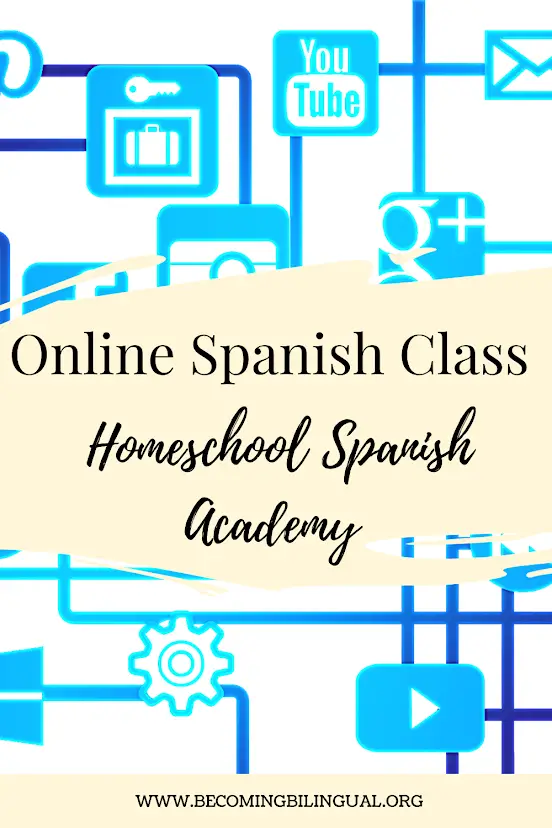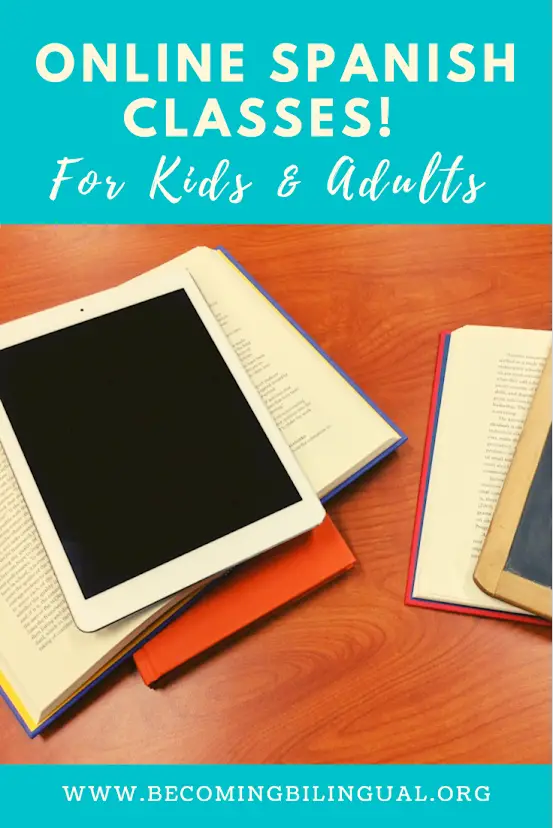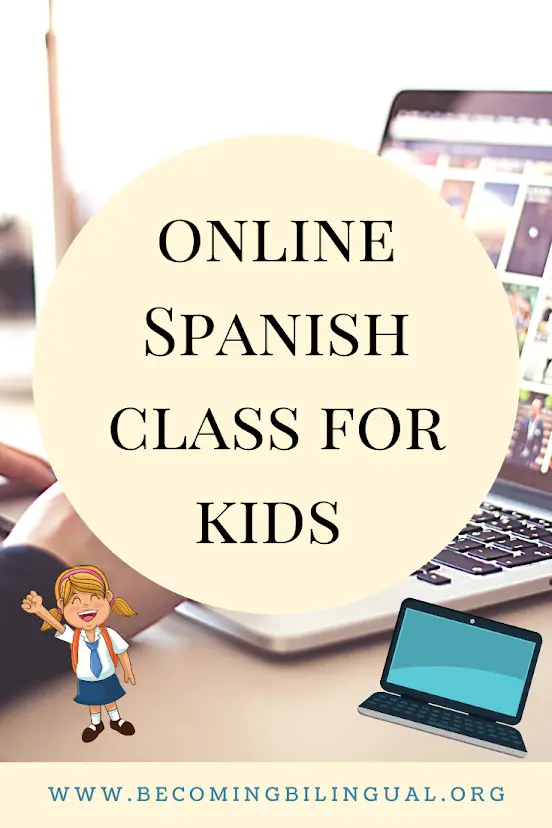Online Spanish Class: Homeschool Spanish Academy

As a nonnative Spanish speaker, I’m always looking for ways to give my daughter exposure to native Spanish speakers.
To read more about the challenges of promoting Spanish in an English dominated community read: How To Get Your Child To Speak The Minority Language
Since we don’t live in a community with a large percentage of Spanish speakers, I needed to look elsewhere.
Luckily there are so many online Spanish class options in our world today!
This summer, Homeschool Spanish Academy reached out to us and provided us with 16 free classes for my daughter so that she could practice her Spanish skills with a native speaker.
This article is going to talk about Homeschool Spanish Academy (HSA), our experience with their Spanish classes, what we liked about it and how it helped my daughter improve her Spanish.
This post contains affiliate links. If you click an affiliate link and make a purchase, I earn a small commission which supports this blog at no additional cost to you. Please see the Privacy Policy for details. Thank you for supporting me!
Table of Contents
What is Homeschool Spanish Academy?
Homeschool Spanish Academy is an online Spanish school that is based in Guatemala.
HSA has a Spanish curriculum that they follow for Preschool level classes all the way through High School. They also have classes for adults learning Spanish at any level. All of the instructors at HSA are native Spanish speakers and most have a high level of English proficiency as well.
All potential students are encouraged to take a free class to see how the program works and to see if it’s a good fit for them.
How a Homeschool Spanish Academy class works
Since we had received a package of 16 free, 25 minute classes online, our first step was to go to the class scheduler.
The first step is to be able to choose the teacher that you want. When we signed up for our first class we didn’t know anything about any of the teachers so we chose “no preference”. After a few classes we found a teacher that my daughter really enjoyed and connected with and we make sure to select for her for future classes.
Once you have selected the teacher (or selected ‘no preference’), the class scheduler will prompt you to select a day that you’d like to search for. You can search for all days of the week, including weekends, or narrow the search by specific day i.e. Tuesdays.
When all of the selections are made, the class scheduler shows all of the available classes that match your criteria so that you can select. At this point you can schedule just one class or you can schedule several classes for a few weeks out.
During our first 2 classes with HSA, the teachers introduced themselves, talked with my daughter for a while in Spanish and then gave her a ‘pre-test’ to determine what level of Spanish she had. Since we speak Spanish at home as much as we can, we decided to try her in the elementary Spanish curriculum as opposed to the pre-school level.
During the pre-test the instructor would share their screen and show a document with questions. The instructor would read the directions and then ask the questions to my daughter.
Many of the questions showed a picture of cartoon characters performing an action and my daughter had to use a complete sentence to describe the picture or name a verb.
For example, if there was a picture of a girl running, she would say, “ella esta corriendo” or “correr”. Since my daughter was successful with the first pre-test, she continued through a second pre-test in her second class.
By the third class, my daughter was ready for her first leveled lesson.
During her first regular class, the instructor introduced herself and talked with my daughter for a little. Next, the instructor shared her screen. The page that she shared showed a worksheet that went through the verb “gustar”. She and my daughter read through the conjugations and practiced them in a variety of sentences.
The next page that the instructor showed included various foods. Together they went through the names of the various types of foods and practiced talking about the types of foods that they liked and didn’t like.
Overall, we noticed that each session usually includes a highlighted verb and a set of vocabulary to work on. After each session the instructor highlights the most important points and often suggests a way to continue practicing at home. The instructor always makes sure that there are time for questions at the end and leaves a little time for conversation.
What we like about our classes
All Native Spanish Speakers
Studies show that the most effective way for people to improve their Spanish language skills is by engaging with native Spanish speakers. Since I’m not a native speaker, I need to make sure that my daughter has a way to access native Spanish.
One of the best parts of HSA is that all of the teachers are native Spanish speakers. The HSA and it’s teachers are based in Guatemala.
We met with 4 different teachers over the course of our Spanish classes and all of the teachers were very clear and easy to understand.
Even though all of the teachers were native Spanish speakers, they also had a strong level of English proficiency. This allowed them to be able to translate or rephrase things in English if there was any confusion.
A Focus On Spanish Conversation
One of my biggest criticisms of the way that foreign languages are taught in the United States is that there isn’t a strong enough emphasis on conversation. Learning rote vocabulary and grammar rules doesn’t do enough to prepare students for a Spanish conversation.
Though Homeschool Spanish Academy uses vocabulary/grammar topics to guide the lesson, the emphasis is on being able to speak in Spanish. Using the topic of the lesson, teachers work with students to talk and engage in meaningful conversation.
During one of my daughter’s lessons, the teacher was introducing common professions ie. Police officer, teacher, doctor, etc. She started the lesson by reviewing ways to talk about professions, “ella es una maestra” (she is a teacher).
Once she saw that my daughter was able to go through some complete sentences, she switched into a game. The teacher described a profession using clues and my daughter had to guess which profession it was, then it was my daughter’s turn to describe a profession and the teacher would guess.
The conversational aspect of the lesson inspired a lot of Spanish practice, created a better connection between my daughter and her teacher, and helped to improve her overall Spanish comprehension and ability.
As I mentioned earlier, all potential students are encouraged to try out a free class. If you’re interested in learning more or would like to schedule a class, check them out here!
I’m always on the lookout for more Spanish resources to share with you!
Happy Learning!
Don’t forget to subscribe here so you can get my latest posts and resources delivered directly to your inbox!


